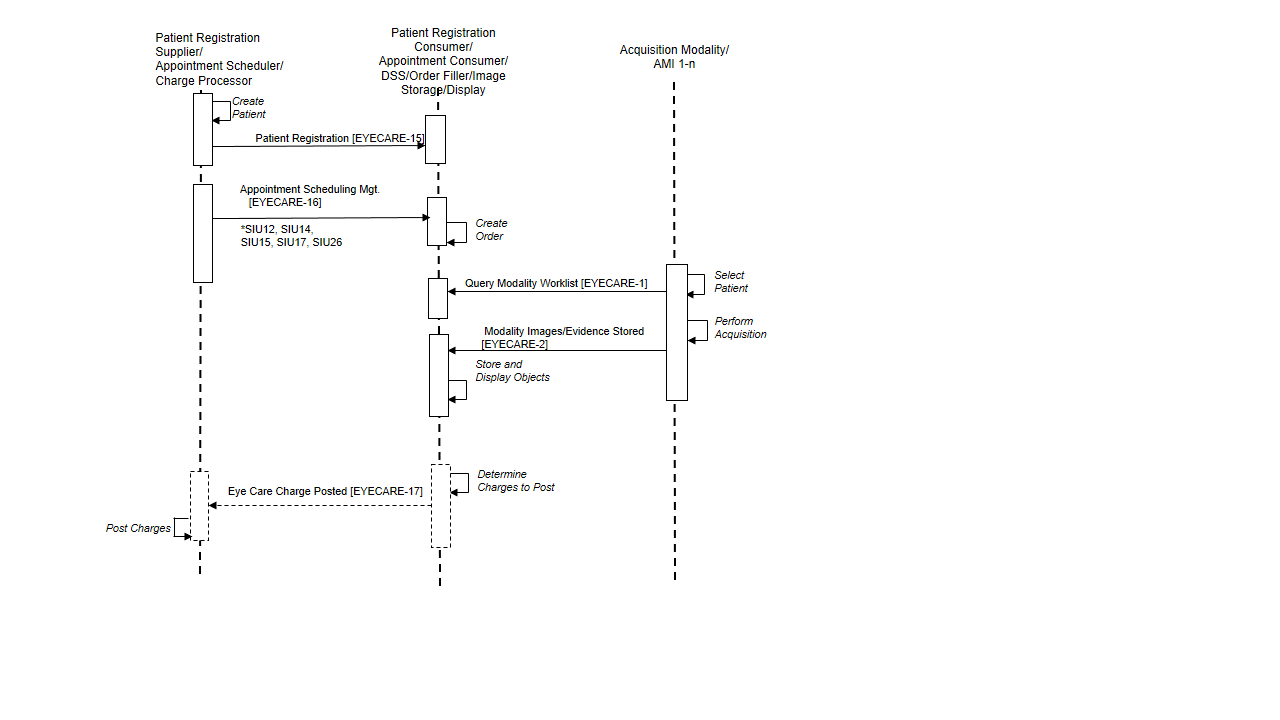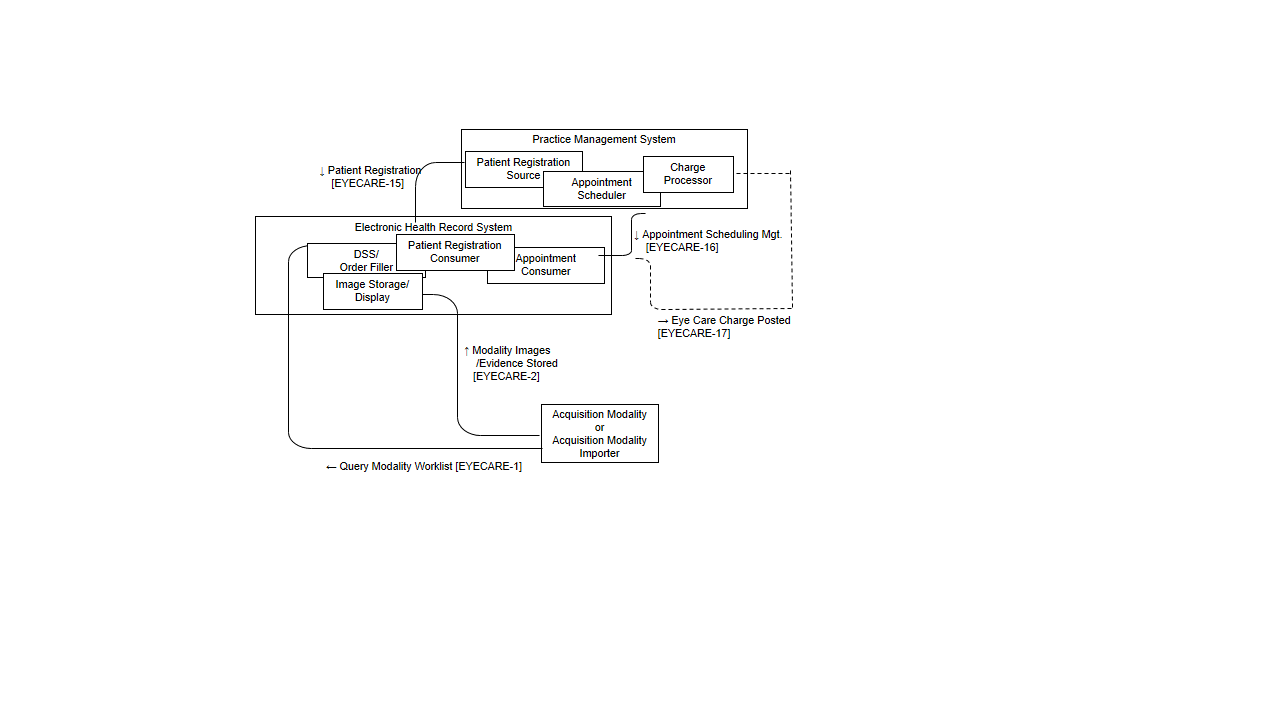Unified Eye Care Workflow
Summary
The Unified Eye Care Workflow (U-EYECARE) Integration Profile establishes the continuity and integrity of basic patient and procedure data in the context of an eye clinic workflow scenario. This profile deals specifically with consistent handling of patient identifiers and demographic data. It specifies the scheduling and coordination of procedure data to a wide variety of diagnostic imaging and testing equipment and the ability to post eye care charges.
During the maturation process of the IHE Eye Care domain, it has developed multiple workflow integration profiles, such as Advanced Workflow, Basic Workflow and Core Workflow. These workflows are based upon each other but also have their own unique set of features and advantages.
This Unified Eye Care Workflow Profile takes the best features of those previously defined workflows (which are now retired), combines them into one workflow profile, and provides more flexibility for three real world implementation models for systems such as EHRs and PACS.
Details
C-EYECARE focuses on HL7 V2 messages that are commonly used in an eye care clinic, such as HL7 SIU (appointment scheduling) messages and HL7 ADT (out-patient registration). These HL7 messages are used to coordinate patient and appointment scheduling information between systems such as a PMS and EHR. The appointment scheduling messages are not included in A-EYECARE or B-EYECARE and provide additional features.
C-EYECARE specifies basic requirements for DICOM integration such as DICOM Modality Worklist and DICOM Storage. The DICOM features are a subset of the features defined in the Basic and Advanced Eye Care Workflow Integration Profiles.
C-EYECARE supports an optional feature to perform billing services between a Charge Processer (often part of a PMS system) and a Department Scheduling System/Order Filler (often part of an EHR system). It utilizes a transaction based upon a HL7 DFT (Detailed Financial Transaction) message.
All HL7 messages in C-EYECARE are based upon HL7 v2.5.1
Typical Workflow Example
Patients are registered and patient demographics are distributed using the HL7 ADT_A04 message. The patient’s appointment is created/managed (i.e., PMS) and sent to consuming systems (i.e., EHR7) via HL SIU messages. This includes new appointments, updates such as confirmed, arrived, checked in, complete. It also supports cancel/delete appointments and patient no shows.
The DSS/OF (i.e., EHR) creates patient orders internal to its system.
DICOM Modality Worklist (MWL) is used to convey patient and demographic information to eye care acquisition devices. The query may be broad (get a list of scheduled procedures from which one will be selected), or patient-specific (provided with sufficient query keys to get back the scheduled procedure for a single patient). Eye Care procedures may be performed on multiple Acquisition Modalities or Acquisition Modality Importers, therefore, multiple devices may perform the queries.
The patient is selected and the eye care device performs the acquisition. Each Modality (eye care device) may produce a variety of images and other evidence (visual fields, refractive and biometry information, etc.). The key DICOM SOP instances are stored to the Image Storage/Display which resides on the EHR. The Image Storage/Display is highly recommended to support all the object types as specified by the Eye Care Image Option, the Eye Care Measurement Option and the Encapsulated PDF Option.
The Image Storage/Display Actor stores the DICOM SOP Instances and is able to display them to the user of the system.
The DSS/Order Filler provides charging information to the Charge Processor and the Charge Processor post the charges.
Systems Affected
- Practice Management System or Enterprise-wide information systems that manage patient registration and services ordering (i.e., admit-discharge-transfer (ADT)/registration system and hospital information system (HIS))
- Electronic Medical Record System or Departmental information systems that manage department scheduling
- Acquisition modalities (e.g., fundus cameras, ultrasound machines, ophthalmic tomography devices, slit-lamp biomicroscopes)
Actors & Transactions:
Specification
Profile Status: Trial Implmentation
Documents: Eye Care Technical Frameworks
Underlying Standards:
See Also
http://one.aao.org/CE/PracticeGuidelines/Information_Technology.aspx

